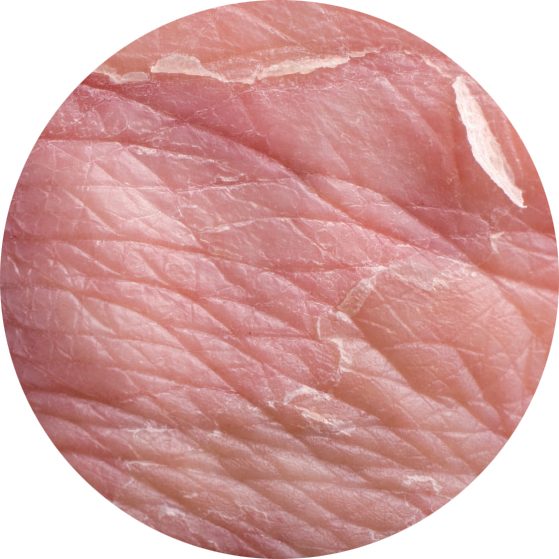Picture the skin as a brick wall: the 'bricks' are cells being held together by a 'mortar' made up of fats and oils. Cells attract and keep water inside, and the fats and oils also help keep the water in. A lack of mortar means that the skin will not retain as much moisture, and gaps can open up in the wall.
Moisture is then lost from the deeper layers of the skin, allowing irritants and bacteria to pass through more easily. If bacteria and irritants get through the cracks, the skin can become irritated and inflamed.
Dry skin
 Dry skin can occur at any time, but is particularly common during winter when cold weather and blasting central heating create low humidity. Dry skin is also more common in older people as the skin becomes thinner and loses sweat and oil glands with age. Other possible causes include dehydration, lack of sun exposure, smoking and pre-existing health conditions such as diabetes.
Dry skin can occur at any time, but is particularly common during winter when cold weather and blasting central heating create low humidity. Dry skin is also more common in older people as the skin becomes thinner and loses sweat and oil glands with age. Other possible causes include dehydration, lack of sun exposure, smoking and pre-existing health conditions such as diabetes.
Dry skin commonly affects the lower legs, arms, thighs and sides of the abdomen. Common symptoms include scaling, itching and cracking, which can lead to secondary bacterial infections.
Did you know?
Dry skin can affect quality of life, especially if itching disrupts sleep or flaking skin makes the sufferer reluctant to socialise.
